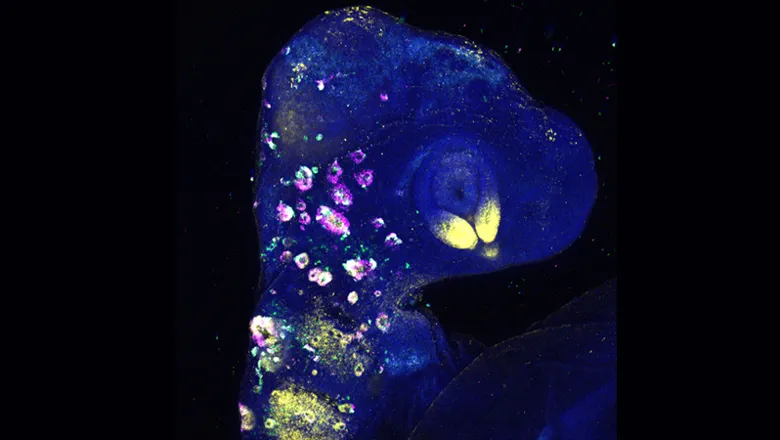The 2022 King's-led research paper was awarded the prize from PNAS, which acknowledges papers that reflect scientific excellence and originality.

A new King's-led study, published in The Proceedings of the National Academy of Sciences (PNAS) has been awarded the 2022 PNAS Cozzarelli Prize. This prize is awarded annually to six research teams whose PNAS articles have made outstanding contributions to their field.
The article, published in 2022, found that a single factor (a protein coding gene known as Sox8) can make non-ear cells adopt ear character during embryo development. Researchers from the Faculty of Dentistry, Oral and Craniofacial Sciences at King's, in collaboration with colleagues from the Francis Crick Institute, explored the earliest steps in ear development to determine what causes cells to become ear cells, and what makes them different from cells which form other sense organs.
The findings from the study not only demonstrate how cell fate decisions are regulated in the embryo but may also open up further exploration of potential genetic pathways for cell reprogramming and regeneration in the ear.
Future studies based on our results could provide the biological knowledge to engineering specific ear and sensory cell types. This could be a pivotal point not only for basic research, but also for the understanding of ear related diseases.– Dr Ailin Leticia Buzzi, lead author on the study
I am delighted that our work has been recognized with this prize. It's a major step forward in understanding early ear development and opens exciting avenues to explore the molecular mechanisms of Sox8 function in the context of cell reprogramming.– Professor Andrea Streit, corresponding author and Head of Centre for Craniofacial & Regenerative Biology
The annual Cozzarelli Prize acknowledges papers that reflect scientific excellence and originality. The award was established in 2005 as the Paper of the Year Prize and was renamed in 2007 to honour late PNAS Editor-in-Chief Nicholas R. Cozzarelli.
'Sox8 remodels the cranial ectoderm to generate the ear' (DOI: 10.1073/pnas.2118938119) (Ailin Leticia Buzzi, Jingchen Chen, Alexandre Thiery, Julien Delile, & Andrea Streit) was published in The Proceedings of the National Academy of Sciences.






